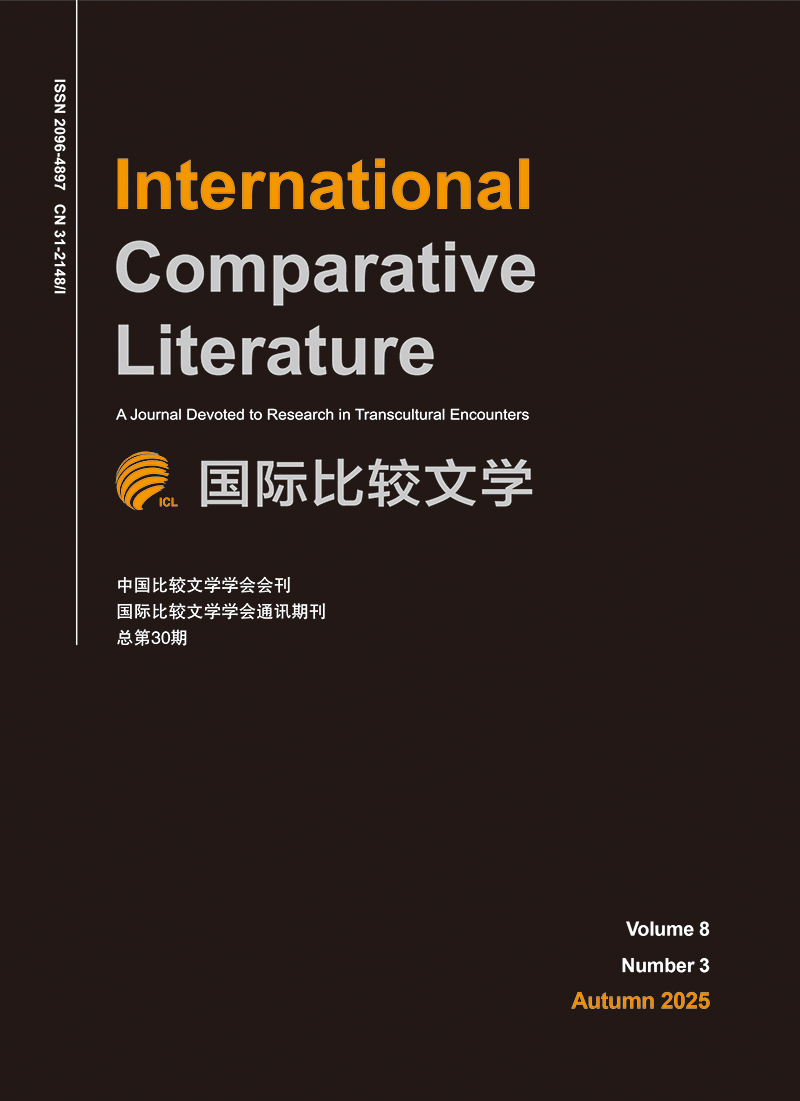|
[1]
|
Fenollosa, Ernest and Ezra Pound. The Chinese Written Characters as a Medium for Poetry (A Critical Edition). New
|
|
[2]
|
York: Fordham University Press, 2008.
|
|
[3]
|
Henderson, Alice Corbin.“Imagism: Secular and Esoteric.” Poetry: A Magazine of Verse 11, no. 6 (1918): 339-43.
|
|
[4]
|
Hughes, Glenn. Imagism & the Imagists: A Study in Modern Poetry. New York: Humanities Press, 1960.
|
|
[5]
|
Jones, Peter. Imagist Poetry. Harmondsworth: Penguin, 1972.
|
|
[6]
|
Kort, Carol. A to Z of American Women Writes (Revised Edition). New York: Facts on File, 2007.
|
|
[7]
|
Lowell, Amy et al. Some Imagist Poets: An Anthology. Boston and New York: Houghton Mifflin Company, 1915.
|
|
[8]
|
——. Some Imagist Poets, 1916: An Annual Anthology. Boston and New York: Houghton Mifflin Company, 1916.
|
|
[9]
|
——. Tendencies in Modern American Poetry. New York: The Macmillan Company, 1917.
|
|
[10]
|
Pound, Ezra. New Selected Poems and Translations. New York: New Directions Publishing Corporation, 2010.
|
|
[11]
|
——.“A Few Don’ts by an Imagiste.” Poetry: A Magazine of Verse 1, no. 6 (1913): 200-206.
|
|
[12]
|
—— (Signature of F. S. Flint).“Imagisme.” Poetry: A Magazine of Verse 1, no. 6 (1913): 198-200.
|
|
[13]
|
——.“A Retrospect.” In Literary Essays of Ezra Pound. Edited by T. S. Eliot. New York: New Directions Publishing
|
|
[14]
|
Corporation, 1968.
|
|
[15]
|
Read, Herbert. The Tenth Muse: Essays in Criticism. New York: Horizon Press, 1958.
|
|
[16]
|
Roberts, Neil. A Companion to Twentieth-Century Poetry. Oxford: Blackwell Publishing Ltd., 2001.
|
|
[17]
|
废名:《谈新诗》,北京:人民文学出版社, 1984年。
|
|
[18]
|
[FEI Ming (FENG Wenbing). Tan xinshi (On New Poetry). Beijing: People’s Literature Publishing House, 1984.]
|
|
[19]
|
郭沫若:《郭沫若致宗白华》(1920年2月16日),见《郭沫若全集》(文学编)第15卷,北京:人民文学出版社, 1990年,
|
|
[20]
|
第45—50页。
|
|
[21]
|
[GUO Moruo.“Guo Moruo zhi Zong Baihua” (A Letter to Zong Baihua[Feb. 16, 1920]). In Guo Moruo quanji
|
|
[22]
|
(Anthology of Guo Moruo[Literary Compilation]). Vol. 15. Beijing: People’s Literature Publishing House, 1990,
|
|
[23]
|
45-50.]
|
|
[24]
|
胡适:《谈新诗——八年来一件大事》,《星期评论》 1919纪念号第5卷,第1—4页。
|
|
[25]
|
[HU Shi.“Tan xinshi—banian lai yijian dashi” (On New Poetry: A Big Event in Eight Years). Xingqi pinglun 1919 jinian
|
|
[26]
|
hao (Weekly Review) 5 (1919 memorial issue): 1-4.]
|
|
[27]
|
——:《胡适留学日记》,上海:上海书店,1948年。
|
|
[28]
|
[——. Hu Shi liuxue riji (Hu Shi’s Overseas Journals). Shanghai: Shanghai Bookstore Publishing House, 1948.]
|
|
[29]
|
蒋洪新、郑燕虹:《庞德与中国的情缘以及华人学者的庞德研究——庞德学术史研究》,《东吴学术》 2011年第3期,第
|
|
[30]
|
122—134页。
|
|
[31]
|
[JIANG Hongxin and ZHENG Yanhong.“Pangde yu Zhongguo de qingyuan yiji huaren xuezhe de Pangde yanjiu—
|
|
[32]
|
Pangde xueshu shi yanjiu” (The Relationship between Pound and China, and Researches of Pound by Chinese Scholars:
|
|
[33]
|
Focused on History of Academic Researches of Pound). Dongwu xueshu (Soochow Academic) 3 (2011): 122-34.]
|
|
[34]
|
梁实秋:《现代中国文学之浪漫的趋势》,《晨报副刊》 1926年3月25日,第57—59页。
|
|
[35]
|
[LIANG Shiqiu.“Xiandai Zhongguo wenxue zhi langman de qushi” (The Romantic Tendency of Chinese Modern
|
|
[36]
|
Literature). Chenbao fukan (Morning Post Supplement) 25 (March 1926): 57-59.]
|
|
[37]
|
刘延陵:《美国的新诗运动》,《诗》 1922年第1卷2期,第23—33页。
|
|
[38]
|
[LIU Yanling.“Meiguo de xinshi yundong” (The Movement of New Poetry in America). Shi (Poetry) 1, no. 2 (1922):23-33.]
|
|
[39]
|
梅光迪:《评提倡新文化者》,《学衡》 1922年第1期,第1—7页。
|
|
[40]
|
[MEI Guangdi.“Ping tichang xin wenhua zhe” (Criticizing Advocators of New Culture). Xueheng (Critical Review) 1
|
|
[41]
|
(1922): 1-7.]
|
|
[42]
|
邵洵美:《现代美国诗坛概观》,《现代》 1934年第5卷第6期,第874—890页。
|
|
[43]
|
[SHAO Xunmei.“Xiandai Meiguo shitan gaiguan” (Overview of American Modern Poetry). Xiandai (Contemporary) 5,
|
|
[44]
|
no. 6 (1934): 874-90.]
|
|
[45]
|
王珂:《英语意象派运动的文体革命特点及与汉语新诗革命的差异》,《社会科学研究》 2007年第2期, 171—176页。
|
|
[46]
|
[WANG Ke.“Yingyu yixiangpai yundong de wenti geming tedian ji yu hanyu xinshi geming de chayi” (The
|
|
[47]
|
Characteristics of Revolution of Literary Forms in English Imagism Movement and the Differences with Revolution of
|
|
[48]
|
Chinese New Poetry). Shehui kexue yanjiu (Social Science Research) 2 (2007): 171-76.]
|
|
[49]
|
徐迟:《意象派的七个诗人》,《现代》 1934年第4卷第6期,第1013—1025页。
|
|
[50]
|
[XU Chi.“Yixiang pai de qi ge shiren” (Seven Poets of Imagism). Xiandai (Contemporary) 4, no. 6 (1934): 1013-25.]
|
|
[51]
|
——:《哀慈拉·邦德及其同人》,《现代》1934年第5卷第6期,第981—984页。
|
|
[52]
|
[——.“Aicila·Bangde ji qi tongren” (Ezra Pound and His Contemporaries). Xiandai (Contemporary) 5, no. 6 (1934):
|
|
[53]
|
981-84.]
|
|
[54]
|
——:《意象派的七个诗人》,见《徐迟文集》第6卷,北京:作家出版社,2014年,第24—37页。
|
|
[55]
|
[——.“Yixiang pai de qi ge shiren” (Seven Poets of Imagism). In Xu Chi wenji (Anthology of Xu Chi). Vol. 6. Beijing:
|
|
[56]
|
The Writers Publishing House, 2014, 24-37.]
|
|
[57]
|
赵毅衡:《诗神远游:中国如何改变了美国现代诗》,上海:上海译文出版社, 2003年。
|
|
[58]
|
[ZHAO Yiheng. Shishen yuanyou: Zhongguo ruhe gaibian le Meiguo xiandai shi (The Muse from Cathay: How China Has
|
|
[59]
|
Changed Modern American Poetry). Shanghai: Shanghai Translation Publishing House, 2003.]
|

 点击查看大图
点击查看大图



 下载:
下载:

